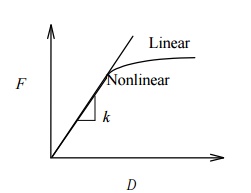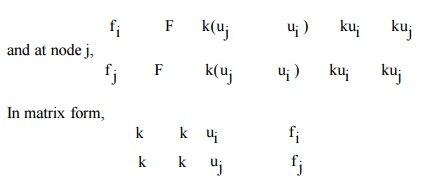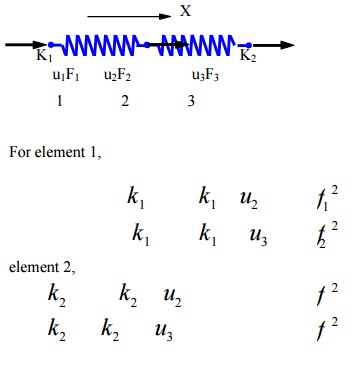Chapter: Mechanical : Finite Element Analysis : Finite Element Formulation of Boundary Value Problems
Piece Wise Continuous Trial Function
PIECE WISE CONTINUOUS TRIAL FUNCTION
In weighted residual method the polynomial and trigonometric series are u sed as trial function. This trial function is a single composite function and it is valid over the entire solution domain this assumed trial function solution should match closely to the exact solution of the differential equation and the boundary conditions, it i s nothing but a process of curve fitting. This curve fitting is carried out by piecewise method i.e., the more numbers of piece leads better curve fit. P iecewise method can be explained by the following si mple problem.
We know that the straight line can be drawn through any two points. Let, ƒ(x)=sin is the approx imated function for straight line segments.
![]() One straight line segment
One straight line segment
Two straight line segment
One Spring Element

Two nodes: i, j
Nodal displacements: ui, uj (in, m, mm)
Nodal forces: fi, fj (lb, Newton) Spring constant (stiffness): k (lb/in,
N/m, N/mm)
Spring force-displacement relationship:

k F / (> 0) is the force needed to produce a unit stretch.
We only consider linear problems in this introductory course. Consider the equilibrium of forces for the spring.
At node 1 we have

or, where
(element) stiffness matrix
u = (element nodal) displacement vector
f = (element nodal) force vector
Note:
That k is symmetric. Is k singular or non singular? That is, can we solve the equation? If not, why?
Problem 4
To find the deformation of the shape

where fI at node 2 F2
M is the (internal) force acting on local node i of element Consider the quilibrium of forces at node
Checking the Results
Deformed shape of the structure
Balance of the external forces
Order of magnitudes of the numbers
Notes about the Spring Elements
Suitable for stiffness analysis
Not suitable for stress analysis of the spring itself
Can have spring elements with stiffness in the lateral direction, Spring elements for torsion, etc.
Related Topics